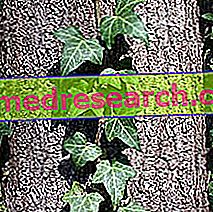
What is Ameluz - 5-aminolevulinic acid?
Ameluz is a medicine that contains the active substance 5-aminolevulinic acid, available as a gel (78 mg / g).
What is Ameluz used for - 5-aminolevulinic acid?
Ameluz is indicated in the treatment of actinic keratosis (abnormal thickening of the skin due to excessive exposure to sunlight) of mild to moderate amounts on the face and scalp.
The medicine can only be obtained with a prescription.
How is Ameluz used - 5-aminolevulinic acid?
Ameluz should only be administered under the supervision of a healthcare professional experienced in the use of photodynamic therapy. This treatment method requires that the area be lit briefly with a special intense red light source. Red light activates the photosensitizing agent present in the Ameluz gel.
Ameluz is applied to skin lesions three hours before red light source therapy. One or more injuries can be treated in one session. The condition of the lesion must be evaluated three months after the treatment. Any residual lesions must be treated again.
How does Ameluz work - 5-aminolevulinic acid?
Ameluz is used as part of a photodynamic therapy, a technique that involves the illumination of an area of skin previously sensitized to light. When Ameluz is applied to skin lesions in patients suffering from actinic keratoses, the active ingredient contained in the gel, 5-aminolevulinic acid, is absorbed by skin cells, where it acts as a photosensitizing agent (a substance that changes when exposed to a given wavelength). When the area to be treated is exposed to light, the photosensitizing agent is activated and reacts with the oxygen present in the cells, releasing an extremely reactive and toxic type of oxygen, which destroys the cells by reacting with their components, including proteins and DNA.
What studies have been performed on Ameluz - 5-aminolevulinic acid?
The effects of Ameluz were first tested in experimental models before being studied in humans.
The effects of Ameluz in photodynamic therapy were examined in two main studies involving patients with actinic keratosis. In the first study, involving 571 patients, Ameluz was compared with placebo and Metvix, a product containing methylaminolevulinate, during one or two treatment sessions. In the second study, involving 122 patients, Ameluz was compared with placebo, during one or two treatment sessions. In both studies the main measure of effectiveness was the total number of patients in whom complete remission of actinic keratoses was observed three months after the last treatment.
What benefit has Ameluz - 5-aminolevulinic acid shown during the studies?
Ameluz was more effective than placebo and comparator in the treatment of actinic keratosis with photodynamic therapy. In the first study, actinic keratosis disappeared three months after treatment in 78% (194 out of 248) of patients treated with Ameluz compared to 64% (158 of 246) of patients treated with Metvix and 17% (13 of 76) of patients treated with placebo. In the second study, actinic keratosis disappeared three months after treatment in 66% (53 out of 80) of patients treated with Ameluz compared to 13% (5 of 40) of patients treated with placebo.
What is the risk associated with Ameluz - 5-aminolevulinic acid?
The most common side effects with Ameluz (seen in more than 1 patient in 10) are irritation, erythema (redness of the skin), pain, itching, edema (swelling), peeling of the skin, crusting and hardening. For the full list of all side effects reported with Ameluz, see the package leaflet.
Ameluz should not be used in people who may be hypersensitive (allergic) to 5-aminolevulinic acid, porphyrins or any of the other ingredients. It must also not be used in subjects suffering from porphyria (inability to synthesize chemicals called porphyrins) or in subjects with certain skin diseases of different origins caused by exposure to light. For the full list of limitations, see the package leaflet.
Why has Ameluz - 5-aminolevulinic acid - been approved?
The CHMP concluded that the benefits of Ameluz treatment outweigh its rare and mostly mild side effects, and that Ameluz is more effective and somewhat safer than the standard therapeutic alternative. Therefore, the CHMP decided that Ameluz's benefits are greater than its risks and recommended that it be given marketing authorization.
Other information about Ameluz - 5-aminolevulinic acid
On 14 December 2011, the European Commission issued a marketing authorization for Ameluz, valid throughout the European Union.
For more information about treatment with Ameluz, read the package leaflet (also part of the EPAR) or contact your doctor or pharmacist.
Last update of this summary: 11-2011.



